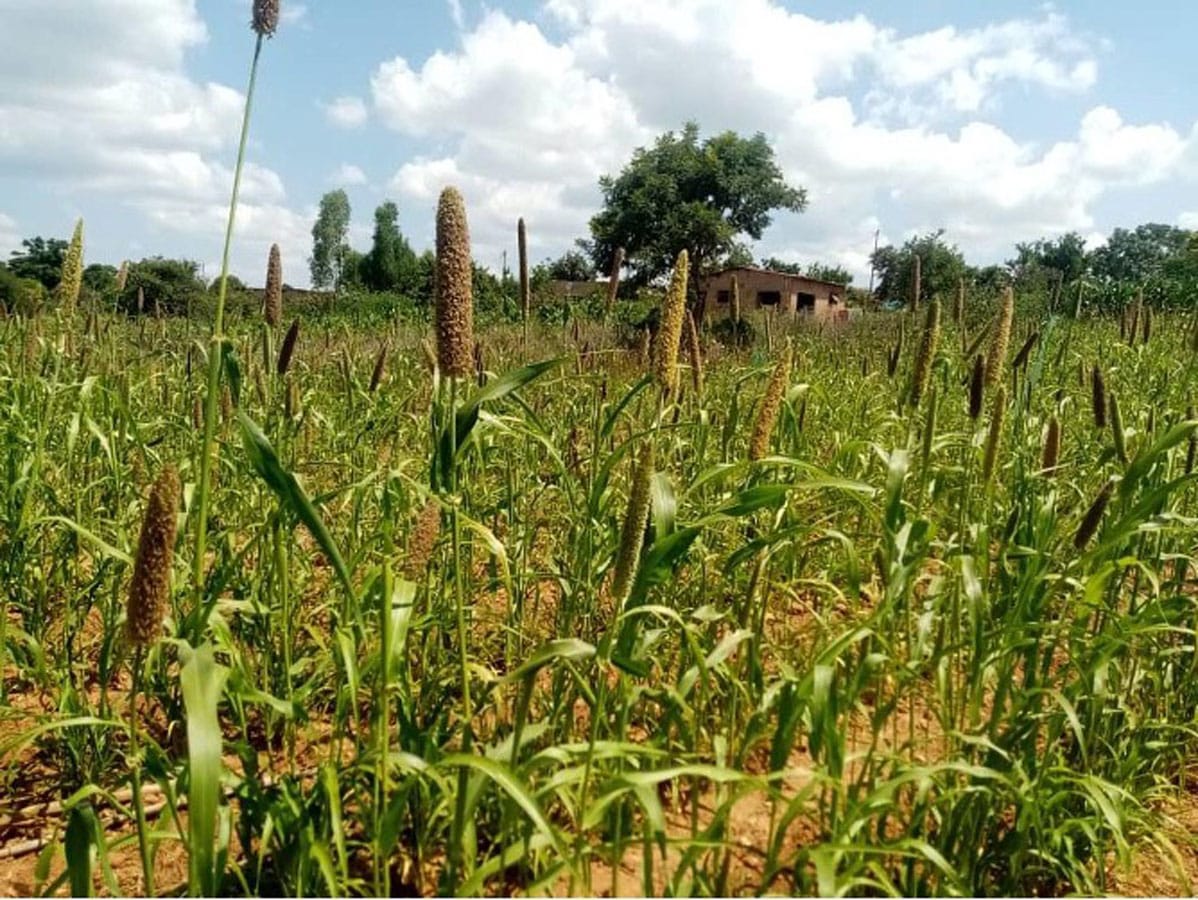Pearl millet is a staple crop in much of sub-Saharan Africa. This food is especially popular with farmers in arid regions as it’s known to grow in some of the toughest of conditions, a key trait in places where farmers rely on the rains and the rains don’t always fall when needed. Pearl millet is nutritious, but it doesn’t contain enough nutrients to satisfy all the needs of any healthy human body. But one research project that has come to our attention at Grow Further is aiming to develop a pearl millet variety that delivers a better nutrition boost to the people who eat it.
Henry Fred Ojulong is a principal investigator at the International Crop Research Institute for the Semi-Arid Tropics (ICRISAT) in Matopos, Zimbabwe, a community in that country’s south near the city of Bulawayo. A grant application submitted by Ojulong and his partners passed a strict screening process and eventually made its way to the list of the top 20 applications sent to peer reviewers. Ojulong specializes in pearl millet and biofortification, the process of breeding crops to be more nutritionally rich. Pearl millet is healthy, for sure, but Ojulong said the popular varieties grown by farmers in southern Zimbabwe are missing something that the population there desperately needs more of: iron.
Wanted: Iron millet
Pearl millet is grown in abundance in Zimbabwe. But yet, as Ojulong pointed out, the population still suffers from high rates of malnutrition. This has to do with the arid climate they live in, the same climate that makes growing pearl millet an attractive choice.
“Pearl millet is a staple crop in the semi-arid lands (ASL) of Zimbabwe,” Ojulong told us. “The main problem is that most of Zimbabwe and southern Africa generally is dry, semi-arid, where few crops can grow. This has left most farmers with limited food, nutrition, and income diversity leading to malnutrition and poverty.” He said most consumers rely heavily on maize, rice, and pearl millet, foods boasting other beneficial nutrients but known to be low in iron content. Their diets simply aren’t diverse enough.
One way to address this problem is to introduce or promote a wider variety of crops, including new crops known to be high in iron content. Such a program would, of course, need to work within southern Zimbabwe’s arid climate, and then convince the population to incorporate more of these newer iron-rich foods into their meals. That seems like a tall order. Thus, Ojulong is instead investigating ways to boost the iron content of pearl millet through biofortification. As he explained it, he believes this approach has a better chance of success.
“One of the main advantages of biofortification is that it does not change the variety’s characteristics in any way apart from the content,” Ojulong said. “The same breeding procedures are used, so no added cost is incurred.” Biofortifying pearl millet is also cost-effective in other important ways, he added.
“The current seed delivery systems will be used; in so doing, not affecting the cost,” he argued. “In fact, it is even projected that it might reduce the costs as the demand for seed is likely to rise and, following the economic theory of the economics of scale, reduce the pricing.”
Easier said than done?
Biofortification sounds like a technically challenging process, something that might involve many months in laboratories sorting out how best to infuse foods with more of the nutrients that researchers are after. Ojulong says this is a mischaracterization. “We use conventional breeding methods, and this is not difficult,” he assured us.
Through multiple growing cycles, his team is identifying which lines of crops demonstrate the highest levels of iron content; these lines are then chosen as parents for the next generation of plant breeding. Given enough time, “we will have identified the ones we want to biofortify, which usually are the farmer-preferred varieties or improved high-yielding varieties with other good agronomic characteristics,” Ojulong said.
Once they have developed the ideal iron-rich pearl millet variety, all that’s left is to share the improved variety’s seeds with millet farmers. The food will eventually reach the community and hopefully help to greatly alleviate iron deficiency. Ojulong seems confident that this last step in the process will prove to be the easiest. As he noted, pearl millet is already popular in the region; it already helps to economically sustain millions of smallholder farmers.
“It is the only suitable and efficient crop for arid and semi-arid conditions because of its efficient utilization of soil moisture and a higher level of heat tolerance,” Ojulong said. “The farmers are familiar with the crop and, therefore, [there’s] not a problem in promoting it.”
As straightforward as it may seem, Ojulong and his partners could still use help. He said ICRISAT and the Crop Breeding Institute are now jointly testing various varieties of biofortified pearl millet with higher iron content. They came to us seeking financial support for data collection, trial monitoring, transportation expenses, and promotional activities.
Biofortification is definitely one of the approaches to agricultural innovation for smallholder farmers that we’re interested in at Grow Further, and Ojulong’s is one of the best proposals in this area we’ve seen thus far. We’re honored to share his work with our readers.
— Grow Further
Photo credit: A pearl millet field in southern Zimbabwe. United Nations Development Program Zimbabwe (CC BY-NC 2.0).




